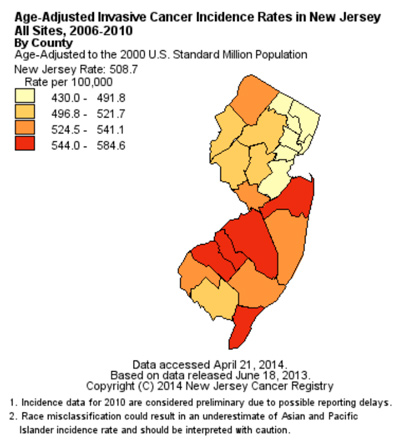A cancer cluster is a greater than expected occurrence of the same type of cancer cases in a group of people in a given workplace or geographical area. Every so often,members notice that cancer has been diagnosed in more than one co-worker and wonder if there is a local cause, that is, if the cancers constitute a cluster.
The issue naturally gives rise to a lot of fear and concern. While it is very difficult to pinpoint common causes for reasons outlined at the end of this article, it is important to take note of possible carcinogens or other hazardous materials in the school or environs and do what is possible to minimize them.
Local associations can take action
Even if acluster is unlikely or unprovable, members concerns should be taken seriouslyand not invalidated. Working with the UniServ field representative, localassociations can respond by reviewing potential exposures in the workplace, andfocus on making sure it is safe in the present, as described in the box.
This isan appropriate task for a local health and safety committee. Contact NJEAorganizing specialist, Thomas Hardy, to help organize a local health and safetycommittee.
In addressing cancer cluster concerns, it is best if members understand basic cancer facts:
- Cancer is common, affecting 45 percent of men and 38 percent of women, and risk increases with age.
- The most common cancers among men in the U.S. are prostate, lung, colon and rectal, bladder, and skin. Among women, they are breast, lung, colon and rectal, uterus, ovary, and skin.
- Smoking accounts for at least 30 percent of all U.S.cancer deaths, and another one-third is attributed to diet, obesity, and physical inactivity, according to the American Cancer Society.
- There is debate about the causes of remaining cancers, which surely include interactions of environmental pollutants in air, water, plastics and other products, as well as heredity, and the age at which exposure occurs.
 Why it’s hard to prove there’s a cancer cluster
Why it’s hard to prove there’s a cancer cluster
Cancer usually takes years to develop
It is hard to prove the association of an alleged cluster with a particular environmental chemical. For one thing, most cancers take many years, even decades to develop. Members may have had exposures that occurred many years earlier that they were unaware of or have forgotten. For example, there may have been hazardous pesticides used, especially before they were regulated in New Jersey schools in 2004.
Cancer is not one disease
Cancer is not one disease, but about 100 diseases, each with its own causes. In order to be a cluster, the cancers must be the same kind, and concentrated in one area or job title. Historically, studies have found occupational exposures associated with particular exposures, such as bladder cancer in certain dye workers and lung cancer in uranium miners. These were large populations of workers exposed over many years to the same carcinogens. Given that only a fraction of exposed people develop cancer, it is hard to detect a cluster in a small population (like staff of a school), especially if workers did not experience long-term repeated exposures.
Rare cancer clusters more likely
A cluster is more likely if the cancer is rare. For example, some workers who worked with polyvinyl chloride suffered an otherwise very rare form of liver cancer, called angiocarcinoma.
In the 1970s there was great interest in researching suspected clusters of environmental cancers. Of all the studies done, only two have been proven in the United States—leukemia associated with industrial chemicals dumped in a river in Woburn Mass., and a similar set of exposures and childhood leukemia in Toms River, N.J. But the associations found in Toms River were tentative, even after years of study of correlations between local industrial chemicals, and health records. The main difficulty in proving correlation was the small exposed population.
Even inthe famous investigation initiated by Erin Brockovitch, the cancer rate of thepopulation she studied turned out to be lower than the rate of the generalpopulation.
Local associations can make sure the workplace is safe
- Use the Right to Know (RTK) survey, the laboratory Chemical Hygiene Plan, and the AHERA Asbestos Management Plan to establish a list of carcinogens that may still be present (see sidebar to locate these items). Known carcinogens in schools that could be on these lists include asbestos, arsenic wood preservatives, formaldehyde and some pesticides.
- Other carcinogens will not be listed, including those present in the building itself, notably polychlorinated biphenyls, or PCBs, which may be present in old fluorescent lights manufactured before 1979 and in deteriorating caulking applied before 1978. Also not listed are those arising from human activities in and around the building, including tobacco smoke, wood dust, silica dust, and diesel exhaust.
- Take steps to make sure any carcinogens are safely removed from the school environment. Your UniServ field rep may refer you to frequent NJEA partner, the NJ Work Environment Council (WEC) for technical assistance.
